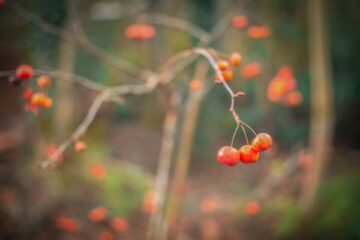As the chilly grip of winter begins to wane and the first hints of spring appear, gardeners across the country are eagerly planning their colourful displays for the upcoming season. Early spring is the perfect time to start planting flowers and vegetables that thrive in the cool and sometimes unpredictable weather of this transitional season. Whether you are an experienced gardener looking to get a head start or a beginner eager to dip your toes into gardening, this guide will introduce you to seven easy plants that will brighten up your garden and provide a bountiful harvest come summer.
1. Pansies
Pansies are a staple in early spring gardens, known for their vibrant colours and hardiness. These cheerful flowers can withstand cooler temperatures and even a light frost, making them an excellent choice for early planting. Pansies come in a wide range of colours, from deep purples and blues to bright yellows and oranges, allowing you to create stunning displays in your garden beds or containers for an long colourful spring.
Tip: Plant pansies in well-draining soil and place them in a location that receives full sun to partial shade. Deadhead spent flowers regularly to encourage continuous blooming throughout the season.
2. Lettuce
Fresh, crispy lettuce straight from the garden is a springtime delight that is hard to beat. Lettuce is an easy-to-grow vegetable that thrives in the cool temperatures of early spring. Choose from a variety of types, including butterhead, romaine, and leaf lettuce, to add a pop of green to your garden and fresh salads to your table.
Tip: Plant lettuce in rich, well-amended soil and water consistently to keep the soil evenly moist. Consider planting lettuce in containers or raised beds to avoid issues with pests and diseases.
3. Snap Peas
Snap peas are a delicious and nutritious vegetable that is perfect for planting in early spring. These vining plants produce crisp, sweet pods that are perfect for snacking fresh off the vine or adding to stir-fries and salads. Snap peas are easy to grow and can be planted directly in the ground or in containers.
Tip: Provide support for snap pea vines to climb, such as a trellis or stakes. Keep the soil consistently moist but not waterlogged to promote healthy growth and abundant harvests.
4. Daffodils
Daffodils are a classic spring flower that symbolizes rebirth and new beginnings. These cheerful blooms come in a variety of shapes and colors, from traditional yellow trumpet daffodils to delicate white and pink varieties. Planting daffodil bulbs in the fall will reward you with a burst of colour in early spring that will brighten up your garden beds and borders.
Tip: Plant daffodil bulbs in well-draining soil that receives full sun to partial shade. Avoid disturbing the foliage after flowering to allow the bulbs to store energy for the following year.
5. Spinach
Spinach is a nutrient-packed leafy green that thrives in the cool temperatures of early spring. This versatile vegetable can be grown in the ground or in containers, making it a great choice for gardeners with limited space. Freshly picked spinach leaves add a burst of flavor and nutrition to salads, smoothies, and cooked dishes.
Tip: Plant spinach in nutrient-rich soil and water consistently to keep the soil evenly moist. Harvest leaves regularly to encourage continuous growth and prevent the plants from bolting in warmer weather.
6. Tulips
Tulips are another classic spring flower that heralds the arrival of warmer weather. These bold and beautiful blooms come in a rainbow of colours, from deep reds and purples to soft pinks and whites. Plant tulip bulbs in the fall to enjoy a stunning display of flowers for early colourful spring that will brighten up your garden beds and containers.
Tip: Plant tulip bulbs in well-draining soil with plenty of organic matter and good drainage. Water sparingly after planting and provide a layer of mulch to insulate the bulbs from temperature fluctuations.
7. Radishes
Radishes are a quick-growing and flavourful vegetable that is perfect for planting in early spring. These crunchy root vegetables come in a variety of shapes and colours, from round red radishes to long white daikon radishes. Radishes can be grown in the ground or in containers and are ready to harvest in as little as three to four weeks.
Tip: Plant radish seeds in loose, well-draining soil and keep the soil consistently moist until the seeds germinate. Thin seedlings to allow proper spacing and harvest radishes promptly to prevent them from becoming woody.
Soil Preparation and Frost Timing
Before planting your colourful spring garden, it’s essential to prepare the soil to provide the best growing conditions for your plants. Start by amending the soil with compost or organic matter to improve its structure and fertility. Remove any weeds or debris from the planting area and loosen the soil to promote root growth and drainage.
When planning your planting schedule, be mindful of your region’s average last frost date to avoid potential damage to your plants. Consult a local gardening resource or extension office to determine the best time to plant each type of flower or vegetable in your area. Consider using row covers or cloches to protect tender crops from late frosts and extend the growing season.
By choosing easy-to-grow plants that thrive in the cool temperatures of early spring and following proper soil preparation and frost timing, you can kickstart your garden and enjoy a colorful and bountiful harvest come summer. So, grab your gloves and trowel, and get ready to bring your garden to life this spring!
Keep on top of your gardening with our free online journal
Our free online tool allows you to organise your ideas and garden plans and help you be as efficient as possible in the garden.
Sign up now

